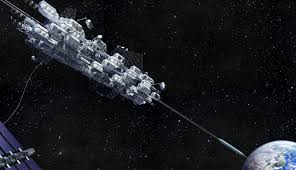
Breaking News
 Trump, Treason, and the New York Times
Trump, Treason, and the New York Times
 Democrat idiocy at work in San Francisco
Democrat idiocy at work in San Francisco
 BREAKING THROUGH Tesla AI in 2026
BREAKING THROUGH Tesla AI in 2026
Who Was The Biggest Antisemite In 2025?
Top Tech News
 Laser weapons go mobile on US Army small vehicles
Laser weapons go mobile on US Army small vehicles
 EngineAI T800: Born to Disrupt! #EngineAI #robotics #newtechnology #newproduct
EngineAI T800: Born to Disrupt! #EngineAI #robotics #newtechnology #newproduct
 This Silicon Anode Breakthrough Could Mark A Turning Point For EV Batteries [Update]
This Silicon Anode Breakthrough Could Mark A Turning Point For EV Batteries [Update]
 Travel gadget promises to dry and iron your clothes – totally hands-free
Travel gadget promises to dry and iron your clothes – totally hands-free
 Perfect Aircrete, Kitchen Ingredients.
Perfect Aircrete, Kitchen Ingredients.
 Futuristic pixel-raising display lets you feel what's onscreen
Futuristic pixel-raising display lets you feel what's onscreen
 Cutting-Edge Facility Generates Pure Water and Hydrogen Fuel from Seawater for Mere Pennies
Cutting-Edge Facility Generates Pure Water and Hydrogen Fuel from Seawater for Mere Pennies
 This tiny dev board is packed with features for ambitious makers
This tiny dev board is packed with features for ambitious makers
 Scientists Discover Gel to Regrow Tooth Enamel
Scientists Discover Gel to Regrow Tooth Enamel
 Vitamin C and Dandelion Root Killing Cancer Cells -- as Former CDC Director Calls for COVID-19...
Vitamin C and Dandelion Root Killing Cancer Cells -- as Former CDC Director Calls for COVID-19...
Space Elevator From the Moon to Geostationary Earth Orbit

We do not have materials for a space elevator from the Earth to Geostationary orbit. The moon spaceline would be longer but would only have to overcome the moon's gravity.
The biggest hurdle to mankind's expansion throughout the Solar System is the prohibitive cost of escaping Earth's gravitational pull. In its many forms the space elevator provides a way to circumvent this cost, allowing payloads to traverse along a cable extending from Earth to orbit. However, modern materials are not strong enough to build a cable capable of supporting its own weight.
The Spaceline is a new analysis of lunar space elevators. By extending a line, anchored on the moon, to deep within Earth's gravity well, we can construct a stable, traversable cable allowing free movement from the vicinity of Earth to the Moon's surface. With current materials, it is feasible to build a cable extending to close to the height of geostationary orbit, allowing easy traversal and construction between the Earth and the Moon.



